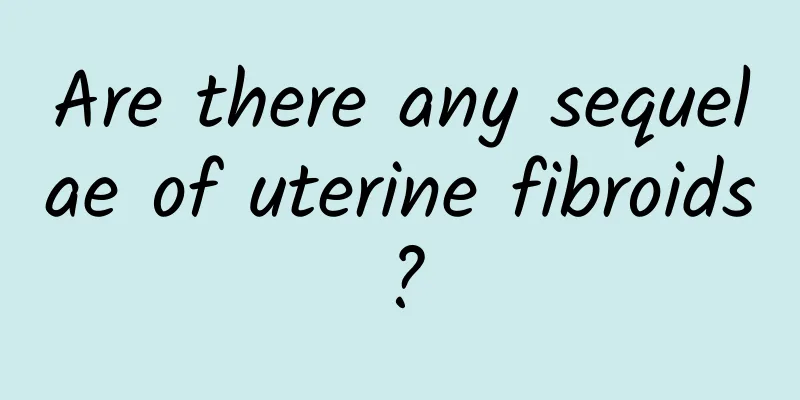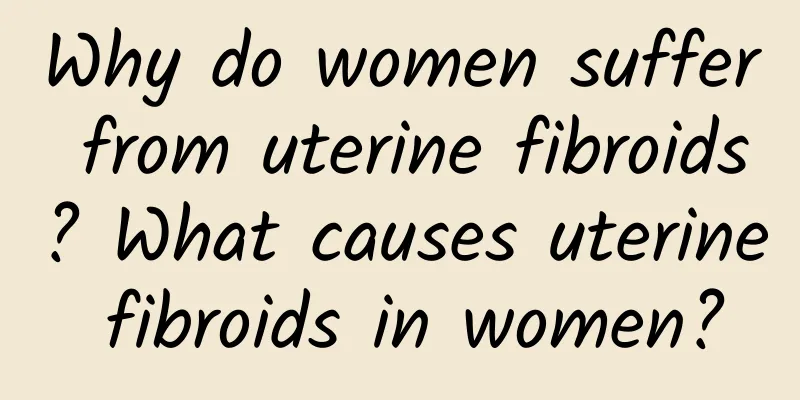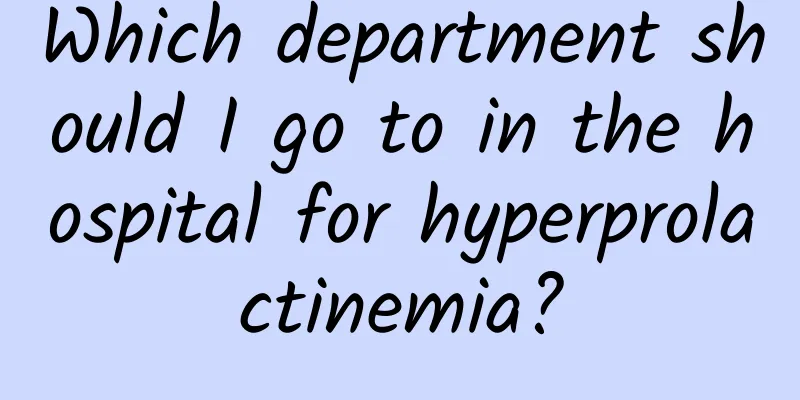Are there any sequelae of uterine fibroids?

|
Uterine fibroids may cause sequelae such as irregular menstruation, infertility, anemia, etc. In severe cases, it may affect the quality of life or cause other health problems. The manifestation of specific sequelae is related to the size, location and growth of the fibroids. Early detection and early treatment are the key to preventing sequelae. 1. Abnormal menstruation and anemia The most common sequelae of uterine fibroids is abnormal menstruation, including increased menstrual flow, prolonged menstruation, or menstrual cycle disorders. Long-term excessive menstruation may lead to iron deficiency anemia, manifested as fatigue, dizziness, pale complexion and other symptoms. In this regard, fibroids should be treated actively. For example, drug treatment can use hormone drugs such as gonadotropin-releasing hormone agonists, and surgical treatment can choose uterine fibroid removal or hysterectomy. If the symptoms are mild, iron can also be supplemented through diet, such as eating more iron-rich foods such as animal liver and spinach. 2. Increased risk of infertility or miscarriage Uterine fibroids may compress the uterine cavity, interfere with the implantation of the fertilized egg, and even cause infertility. If the fibroids are located in the submucosal layer, the risk of miscarriage will increase accordingly. If infertility or miscarriage is caused by fibroids, hysteroscopic surgery can be chosen to remove the submucosal fibroids. In addition, in vitro fertilization IVF technology can also be used as an assisted reproductive method to help pregnancy. 3. Compression symptoms Larger fibroids may compress nearby organs, causing back pain, frequent urination, difficulty urinating, or constipation. If the compression symptoms are severe, surgical treatment may be considered, such as laparoscopic or open surgery to remove the fibroids. Maintaining good bowel and bladder health habits in daily life can also help relieve symptoms. 4. Risk of tissue lesions Although most uterine fibroids are benign, they may undergo malignant transformation in rare cases, accounting for less than 0.5%. If the fibroids suddenly grow too fast or are accompanied by severe pain, you should be alert to the condition and seek medical attention immediately. The doctor may recommend magnetic resonance imaging (MRI) or biopsy to confirm the diagnosis. To avoid the sequelae of uterine fibroids, it is necessary to have regular gynecological examinations, pay attention to changes in menstrual patterns, and seek timely treatment if abnormalities are found. Comprehensive response measures can reduce the discomfort caused by uterine fibroids and improve the quality of life. |
<<: What are the symptoms of left ovarian cyst
>>: How long does it take for threatened miscarriage to occur?
Recommend
How to detect pelvic effusion
Pelvic effusion is a very common gynecological di...
How to check for cervical erosion
What are the examination methods for cervical ero...
Make good use of sugar substitutes to help lose weight. Save 100 calories a day and enjoy slimmer skin.
Many people try their best to lose weight, but to...
How to check pelvic effusion with abdominal pain
How to check for pelvic effusion accompanied by a...
Does vaginal candidal infection affect menstrual cycle?
Does vaginal candidiasis affect the menstrual cyc...
Can irregular menstruation be treated?
Can irregular menstruation be treated? Menstruati...
What are the symptoms of cervicitis?
What are the main symptoms of cervicitis? Cervici...
What symptoms should you pay attention to for uterine fibroids
Uterine fibroids are a common disease among women...
What are the dangers of cervical warts?
Cervical warts are particularly harmful to patien...
Patients with ectopic pregnancy can often steam chicken with Chinese medicine after surgery
Patients with ectopic pregnancy must strengthen t...
What can a 43-year-old woman take to delay menopause?
Supplementing with estrogen, vitamin D, calcium a...
How should patients with thick endometrium pay attention to their diet?
Patients with endometrial thickening should avoid...
What are the causes of bacterial vaginosis?
Bacterial vaginitis is a common disease among wom...
What are the best treatments for pelvic inflammatory disease?
What are the best treatments for pelvic inflammat...
What is the trick to treat vulvar leukoplakia?
Symptoms of vulvar leukoplakia include whitening ...









